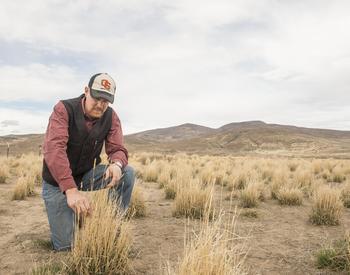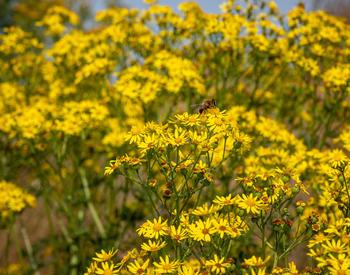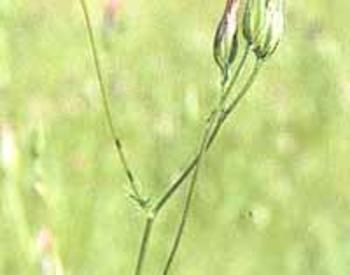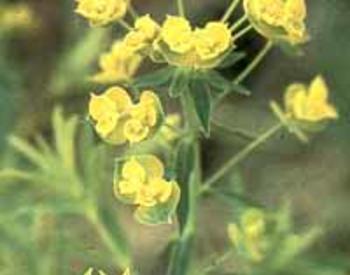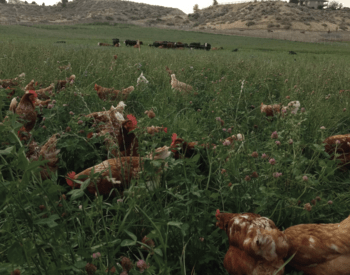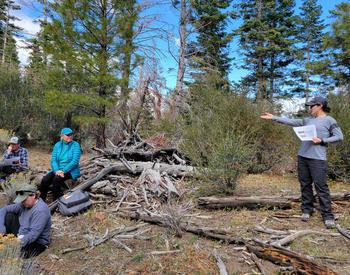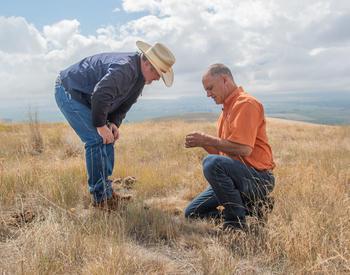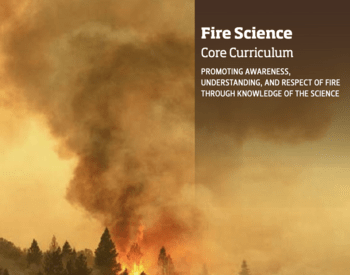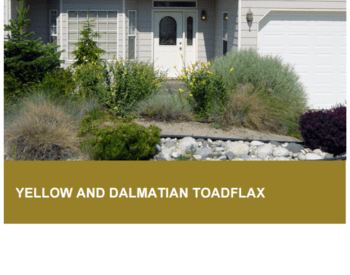Introduction
With few exceptions, the goal of most range improvements is to increase returns from the landscape by increasing forage quantity, quality or animal production. Exceptions might be efforts to reduce wildfire risks, improve wildlife habitat or increase watershed yields through woody plant control.
Given the high volume and low returns of the ranching industry, economics mandate that investments be directed toward projects with the greatest return. For instance, fencing and intensive grazing management for 15 to 30 years may provide no increase in range condition or herbage yield (Pechanec et al. 1965) while sagebrush control might increase forage standing crop by a multiple of three (Sneva, 1972).
An often overlooked opportunity for garnering greater returns in many rangeland pastures is rectifying poor or uneven livestock distribution. Poor livestock distribution can cause overuse of herbage in some locales and leave ungrazed forage in other areas (Figure 1). Since ungrazed areas do not help support one's operation, managers should strive for uniform use of herbage across their pastures to both maximize profit and to avoid deleterious effects on herbage in areas where cattle tend to congregate.
Factors affecting rangeland cattle distribution
Several animal and landscape attributes affect livestock distribution. Animal effects include:
- Species or breed with some breeds being more willing to negotiate hilly terrain than others.
- Age or prior experience on a landscape with younger cattle using steeper slopes but older animals traveling more and ranging further from water than younger companions.
- Reproductive status with wet cows having greater nutritional demands and ranging further than dry companions (Vavra, 2009).
Landscape effects include:
- The distance to and elevation of drinking water in arid environments.
- Degree of slope.
- Density of woody vegetation.
- Presence of trails.
- Locations of mineral or protein supplements.
- The plant community composition of the landscape and its effects on herbage, the forage quantity and quality dynamics across large pastures.
- Historic foraging patterns that generate new herbage growth in grazed areas each spring and a mix of old and new growth in ungrazed locales.
- Temperature or thermal dynamics in hilly terrain with cattle typically trying to remain within their thermal neutral zone (Ganskopp and Bohnert, 2009).
Tools or methods for improving livestock distribution
Fencing is one of the earliest livestock distribution tools applied in the American West with first efforts centered simply on confining one's stock or preventing trespass and forage/water use by outsiders. Fences initially followed property lines with little thought given to internal manipulations of livestock grazing patterns. Bailey and Rittenhouse (1989) suggest fencing is an excellent tool for affecting cattle distribution if one can outline areas with similar forage characteristics and topography. One can then avoid the complexities of managing a landscape with varying levels of appeal to stock and obtain a more consistent use of herbage in each unit.
One of the greatest distribution challenges in the arid West is avoiding late-season stock concentrations in riparian zones. During mid- to late-summer, riparian areas typically offer water, higher quantity or quality herbage than surrounding uplands, and shade that provides relief on hot days. While herding and supplement placement in distant locales can affect some change in distribution, fencing and management of a riparian zone as a discrete unit offers the greatest success in extensive pastures (Bailey, 2004). Dividing rough and gentle terrain into separate pastures will also foster more uniform use of the rugged portions of one’s landscape.
Strategic management or placement of ponds, pipeline systems or portable water stock tanks can effectively control cattle distribution in extensive arid land pastures. Holechek et al. (2001) suggest cattle will thoroughly graze rangelands within one mile of water and that forage utilization will decline by about 50% in the zone from one to two miles from water.
Roath and Krueger (1982) and Ganskopp and Bohnert (2009) found that vertical distance to water may be more important than horizontal distance in rugged terrain. If only a single water source is available in a pasture, movement of a portable stock tank to historically unused locales will effectively draw cattle away from their habitual grazing areas and hold them in the desired location.
Similarly, if all water sources in an extensive pasture are fenced and gated, one can effectively rotate a herd around a pasture by successively opening and closing gates to each source. This practice could also be used to lure cattle away from biologically sensitive sites like leks or nesting areas, or politically sensitive portions of public lands (popular camping sites) during critical seasons. If stock are not familiar with this practice, they should be herded to new sites as water is made available during their first season.
Cattle grazing on sagebrush rangelands are drawn to areas supporting higher than average forage quality. Factors affecting this landscape attribute include prior grazing, which removes standing cured herbage (Ganskopp and Bohnert, 2006) and controlled burns or wildfires that remove both cured herbage and competing shrubs (Ganskopp et al. 2009).
If historically ungrazed locales can be enclosed with temporary fencing and cattle forced to clean up cured standing forage late in the grazing season, the fence can be removed, and cattle will return on their own in subsequent seasons to graze the newly growing herbage. Controlled burns in previously unused locales can have the same effect. In subsequent post-burn growing seasons, cattle easily harvest high quality herbage with no need to sort among a mix of old and new growth.
Removal of competing shrubs also leaves more soil moisture and minerals available for the remaining grasses, and burned areas may experience an extended growing season in the years immediately after a fire. Unmanaged cattle use of burned sites can be excessive, however, with as much as 30% to 60% of their grazing efforts focused on 4% of a 2,000-acre pasture (Figure 2). For that reason, one should attempt to burn as much of a pasture as possible to avoid undue stock concentrations on small portions of pasture. Because fire also reduces the vigor of surviving grasses, one needs to assure that burned areas are conservatively grazed until desirable herbage has regained control of the site (Bates et al., 2009).
Conclusion
On rangelands, uneven cattle distribution patterns can lead to excessive use of herbage in portions of a pasture and no use or waste of herbage in areas not visited by cattle. Range improvements affecting more even distribution and levels of forage utilization can increase the carrying capacity of a pasture and/or allow stocking for extended periods.
Fencing is an effective means of managing cattle distribution in diverse environments if areas with similar topography and forage characteristics can be encompassed.
With a tendency for cattle to remain within one to two miles of water, stock water developments are another means of obtaining more uniform use of large arid land pastures. Cattle will abandon traditional foraging areas and shift to new sites if portable stock tanks are moved or gates to permanent sources are opened or closed to allow or limit access. Water development options include:
- Surfaced charged ponds.
- Spring or well developments.
- Pipeline systems.
- Strategic placement of portable tanks.
Grazing cattle are also attracted to sites supporting higher quality herbage than surrounding terrain. Managed late-season intensive grazing that forces cattle to clean up decadent forage can attract cattle to the same areas in subsequent seasons when there is no cured material to impede access to new growth. Controlled burns can accomplish the same task, but because cattle are especially attracted to the lush new herbage, one should burn as much of a pasture as possible. One should also closely manage grazing in subsequent years to assure that desirable grasses continue to dominate the site.
***This article provides peer-reviewed expertise on tools and methods to improve cattle distribution. However, since the original publication of this article (in 2011), threats to rangelands have continued to grow. While prescribed burning can be used as an effective management tool, the use of fire should be exercised judiciously, especially on warm, dry rangelands where fire increases the risk of conversion to invasive annual grasses, reducing rangeland productivity.
For more details on wild and prescribed fire see the SageSTEP Wild and Prescribed Fire bibliography and the 2013 review by Rick Miller et al. A review of fire effects on vegetation and soils in the Great Basin Region: response and ecological site characteristics.
References
- Bailey. 2004. Journal of Animal Science 82:147-153.
- Bailey and Rittenhouse. 1989. Rangelands. 11:159-161.
- Bates et al., 2009. Rangeland Ecology & Management 62:98-110.
- Ganskopp and Bohnert. 2006. Rangeland Ecology & Management 59:189-196.
- Ganskopp and Bohnert. 2009. Applied Animal Behavioral Science 116:110-119.
- Ganskopp et al., 2009. Or. Agricultural Experiment Station Special Report # 1092. pp. 25-32.
- Holechek et al., 2001. Range management principles and practices. 4th ed. Prentice Hall.
- Pechanec et al., 1965. USDA Agriculture Handbook 277.
- Roath and Krueger. 1982. J. Range Manage. 35:332- 338
- Sneva. 1972. J. Range Manage. 25:174-178.
- Vavra, 2009. Eastern Oregon Agricultural Research Center Special Report # 1092, 8-14.
